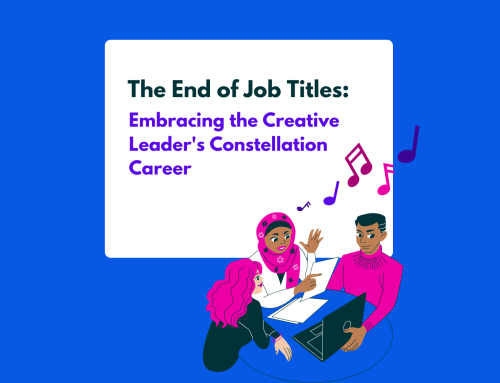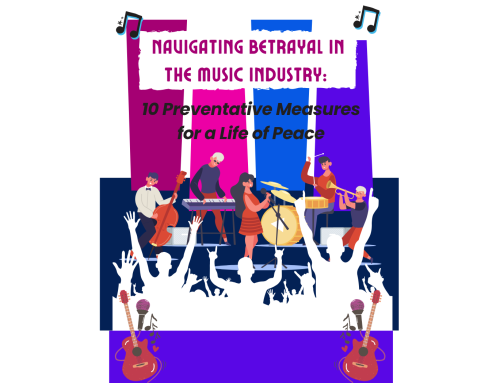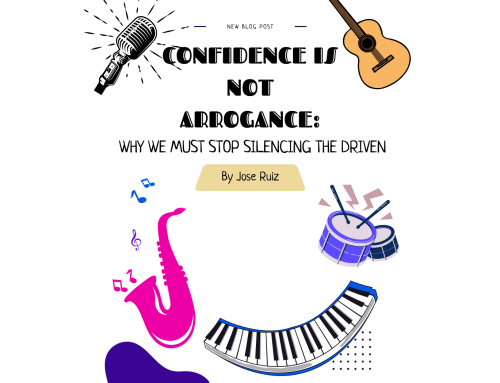by José Valentino Ruiz, Ph.D. & Derris Lee, M.M.
Three Keys to Impact
In a recent conversation with a colleague, we stumbled onto a truth that’s been hiding in plain sight: access to resources—be it scholarships, community programs, or organizational support—isn’t the bottleneck we often assume it to be. The real challenge lies in the disconnect between those resources and the people they’re meant to serve. Counties, nonprofits, and creative industries are flush with opportunities, yet too many remain underutilized—not for lack of intent, but for lack of execution. After some back-and-forth, we landed on three linchpins that could close this gap: communication, education, and demonstration. These aren’t just tools; they’re the framework for empowering individuals and communities to build self-sufficiency and sustainability in fields like music, entrepreneurship, and beyond.
Let’s start with communication. It’s the conduit that turns potential into action. We can’t assume that opportunities speak for themselves—someone has to amplify them, and do it in a way that resonates with the intended audience. Too often, we see top-down messaging that misses the mark, failing to account for cultural context or practical barriers. Research underscores this: effective communication is foundational to collaboration and engagement, particularly in creative sectors where trust and relevance are currency (Greenhow, 2011). For professionals in the music business or community leadership, this means tailoring outreach—whether through digital platforms, partnerships, or direct dialogue—to meet people where they are. It’s not just about broadcasting; it’s about connecting.
Next, education. This isn’t about handing out pamphlets or hosting a one-off seminar—it’s about equipping people with actionable knowledge. Once we’ve got their attention, we need to contextualize what’s available: how does a program work, why does it matter, and what’s the payoff? The Theory of Planned Behavior offers a lens here, suggesting that understanding a process—like how to leverage a grant or launch a creative venture—enhances the intent to act (Ajzen, 1991). In practice, this could mean breaking down the mechanics of a scholarship for emerging artists or outlining the steps to sustainable entrepreneurship. Education builds the bridge between awareness and capability, fostering not just knowledge, but wisdom—the ability to apply it effectively.
Finally, demonstration. Theory only takes us so far; people need to see the proof in action. Hands-on examples—workshops, mentorships, or even digital walkthroughs—bring abstract ideas into the tangible world. Social Learning Theory supports this, positing that observation and participation drive skill acquisition and confidence (Bandura, 1977). Imagine a music producer shadowing a veteran to learn the ropes, or a community leader hosting a live pitch session for a grant application. Demonstration doesn’t just teach—it inspires. It’s the difference between telling someone they can succeed and showing them how it’s done, step by step.
Why do these three matter?
Because they’re the bedrock of sustainable outcomes. Communication opens the door, education provides the tools, and demonstration proves the blueprint works. Together, they cultivate self-sufficiency—individuals and communities standing on their own—and position initiatives for longevity. A study on social media and learning found that clear information paired with practical examples significantly boosts engagement and performance (Al-Rahmi et al., 2023). Apply that to our field: a well-communicated workshop, grounded in education and reinforced by demonstration, doesn’t just spark a moment—it plants seeds for enduring impact.
This isn’t a silver bullet for sustainability—let’s be clear about that. Economic shifts, systemic inequities, and resource constraints will always complicate the picture. But if we’re serious about mission-driven work—whether it’s elevating artists, fostering creative enterprises, or strengthening communities—we can’t skip these steps. They’re the preconditions for viability. In practice, this might look like video tutorials that demystify funding applications, digital platforms that educate on intellectual property, or in-person collaborations that showcase success. The medium matters less than the commitment to all three: communicate with purpose, educate with clarity, and demonstrate with precision.
For those of us in the music business, creative leadership, or community development, the charge is simple but urgent: integrate these pillars into our services. The resources are there—scholarships, networks, tools—but they’re only as good as our ability to deliver them. I encourage you to prioritize communication, education, and demonstration to not only address the disconnect but also to build a foundation for knowledge, wisdom, and understanding that lasts. Beyond good practice, it’s the kind of public scholarship that moves the needle.
References
Ajzen, I. (1991). The theory of planned behavior. Organizational Behavior and Human Decision Processes, 50(2), 179–211.
Al-Rahmi, W. M., Yahaya, N., Alamri, M. M., Alyoussef, I. Y., Al-Rahmi, A. M., & Kamin, Y. B. (2023). Social media influence on students’ knowledge sharing and learning: An empirical study. Education Sciences, 13(7), 745.
Bandura, A. (1977). Social learning theory. Prentice Hall.
Greenhow, C. (2011). Online social networks and learning. On the Horizon, 19(1), 4–12.




Leave A Comment